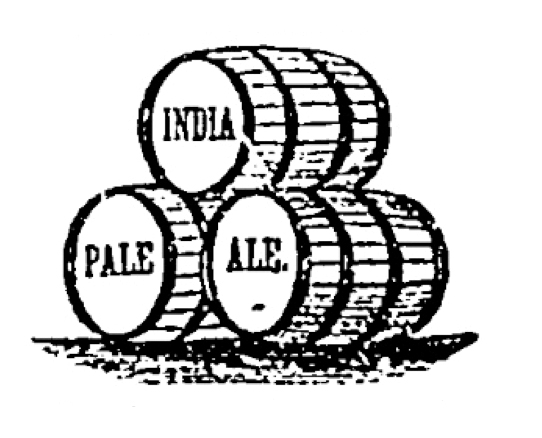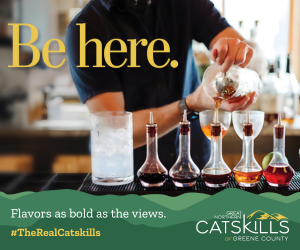Beer has a long history in New York, stretching back almost 400 years to the time of the first Dutch colonists. From that point, the state took a leading role in brewing in the country, and by the time of Prohibition, New Yorkers made more beer and drank more beer than any other state in the Union. From early Dutch times, breweries were resorts for social and business exchange, sources of potable drink, and engines of economic growth. For brewers, they were the basis of personal wealth and stepping-stones to influence and political office. Breweries were also, as the stories here attest, the location of interesting events and tales that help to make up the fabric of New York’s beverage history.
The Bet
In late October 1660, with the harvest in and the new brewing season begun, an argument took place in Harman Gansevoort’s brewery in Bethlehem, NY. Fueled by his own beer, the dispute threatened to end Gansevoort’s fledgling brewing career, a career that became the foundation of his wealth and established the prominent position of his family in Albany and in American history.
On that fall day in 1660, a group of eight or nine men had gathered in Gansevoort’s brewery. Among them were Claes Bever and Marten Cornieliez, known to everyone as “Swarten Marten”, or “Black Martin.” The men had known each other from their youth in Houten, near Utrecht, in the Netherlands. Their familiarity is at the heart of the story.

Having finished off a keg of beer, the group urged Gansevoort to tap another. He reluctantly complied, and the men went back to their cups and conversation. The wager came near the end of the second keg, when Claes Bever teased Gansevoort about his having been a hog driver back in Holland. Gansevoort retorted that Bever had been a shepherd, and noted that Black Martin could back his claim. The wager was a half-cask of beer, with Gansevoort claiming that Bever had been a shepherd and Bever denying the fact. Bever insisted that Gansevoort tap the half-keg, not thinking that the brewer would do so. To his surprise, Gansevoort tapped the half-keg and a new round of drinking began. In his cups, Gansevoort raised the stakes. He bet his brew kettle against Bever’s canoe full of firewood moored at the shore of the river. Kettle and canoe were to be delivered together as surety on the wager. Bever took the bet.
When the beer was finished, the brewer looked to secure the canoe. At Gansevoort’s order the canoe was hauled on shore and men began to unload the wood to loud protests from Bever. “You wrong me and do me an injustice,” Bever told to Gansevoort, noting that he could not take possession of the brewer’s kettle because it was bricked into place. ‘Nevertheless,” declared Gansevoort, “I shall have it.” Bever let him know that he would “rue” his decision and he took the brewer to court.
Although Gansevoort believed that Black Martin had confirmed his story, few in the brewery at the time heard him do so. Black Martin himself testified that he had never made such a claim. In the end, it appears that Gansevoort never pressed his case. He failed to appear in court and the court awarded Bever the brew kettle. The incident apparently did not sour the relationship too badly, as Bever supplied hops for Gansevoort’s brewery into the 1680s.
Gansevoort survived the loss. He moved to a new brewery in Albany where he made his fortune. Centuries later George Rogers Howell noted that when Stanwix Hall was raised in 1833 “the aged Dutchmen of the city compared it to the capacious brew-kettle of old Harman Gansevoort,” although clearly they were not recollecting the brew pot lost to Claes Bever in that drunken bet in 1660.
Mansfield’s Medicamentum Beer
By the nineteenth century, beer had long been touted for its health benefits. It was a reliable substitute for water and had the added benefit of being considered nutritious, essentially a meal in itself. In New York, brewers regularly advertised the health benefits of their beer for nursing mothers or as digestive aids, and some even claimed that their beer could cure diseases from hay fever to cholera. Doctors prescribed beer as medicine, and after Prohibition, a short-lived legislative initiative allowed brewers to sell beer “at the old time strength” for medicinal purposes. Beyond beer, many manufacturers made malt medicines that would have made snake-oil salesmen proud.
In the 1830s, Joseph Mansfield put out a product that was both a beer and a medicine. He called it “Old Doc Mansfield’s Medicamentum Beer,” although he was not a doctor. He was, in fact, a fishmonger. His rather interesting advertisements regularly offered a selection of “fishables” along with his beer.
The beer itself was a strong brown ale to which he added his own mixture. It is unclear exactly what Mansfield put into his beer, but typical medicamentum recipes included turpentine, linseed oil, and sulphur. “Medicamentum” refers to a substance that cures a disease rather than treating it, although Mansfield noted in his ads that it is something “which helps the body and mind, as there is a sympathy between both.” Customers, he noted, should purchase the beer at his establishment on Congress Street:
For his superior Beer, you had better call here,
And have all your mortal cans fill’d.
“Tis a positive fact, now what do you think?
There’s nothing more wholesome than nourishing drink.
Then drink Mansfield’s Beer, if you’d cherish long life –
Let your children drink freely, with yourself and your wife:
For summer disorders a safeguard and sure,
For intestine commotion an infallible cure.
Having made himself a success in Troy, Mansfield decided to move to New York City in 1840 to try his hand there. He sold his business and his “secret” recipe to Ezra DeFreest, who continued to manufacture it under Mansfield’s name. Things did not go well for Mansfield in New York City – perhaps they tasted his beer – and he returned to Troy, where he waged an ongoing newspaper battle with DeFreest. “The little Hinglishman,” claimed Mansfield, had no right to sell Mansfield beer, using his name and his recipe. He asserted that were was no way that DeFreest could know his formula, apparently forgetting that he had instructed DeFreest in how to make it when he sold him the business and the name. Mansfield’s efforts were in vain. In 1844, he sold his “amiable horse” and other goods and moved back to New York City, where he started manufacturing cough drops – which might give an indication of the taste of his beer.
The Fugitive Brewer
Poughkeepsie has a long brewing history, with the Vassar Brewery, begun in 1797, being the best-known operation in the city. Vassar’s ale enjoyed wide distribution and a high reputation for quality. The city was home to many other brewers, most of them small concerns producing lager beer. One of these was the Buffalo Brewery of Martin Cline. Wolf & Zimmer established the brewery in 1874 and sold it to John Bennett, a Buffalo maltster, in 1876. Bennett believed he could make good beer with his Buffalo malt and Poughkeepsie water. He upgraded the brewery, bringing in a new system and process developed by A. E. Feroe of Tivoli, NY. He claimed that Feroe’s processes allowed the brewery to make beer more efficiently and for less cost. In a short time, he brought Marvin Cline, another Buffalo maltster, on board as a partner. In January 1879, a New York City newspaper story featured the brewery, and it seemed a business on the rise. All was not as it seemed, however, and by June of that year, Bennett had left the partnership, and Cline was alerting potential creditors not to deal with Bennett. Little did creditors know that it was Cline that they should watch.
Within six months of notifying the public about Bennett, Cline had fled the country. To keep the brewery afloat, the brewer had forged a number of bills of credit for malt sales at his Buffalo malt house, and cashed them at banks in both Buffalo and Poughkeepsie. Once captured, he claimed that his malt house had burned to the ground and his insurers were not keen on paying up, apparently because they suspected something odd with the fire. The truth is that Cline had passed off some of the forged notes before the fire. In all, he collected almost $80,000 from the banks ($1,941,776 today). Authorities arrested Cline in Queenston, Ontario, after a lengthy escape that saw him moving back and forth between the two countries. He was returned to Buffalo, where he faced fraud charges.
The Vassar Brewery purchased Cline’s operation at a receiver’s sale in December 1880. They took its hops, malt, and barrels for their own use. The “old and rickety” Buffalo Brewery burned in 1890 and the building was torn down in 1894.
Obliging Bearded Bandits
Although records indicate breweries in the county in the 1770s, the Orange County Brewery in Middletown is the first for which reliable information exits. The brewery got its start in the mid-1850s, and in one form or another operated until Prohibition, and attempted a revival when the 18th Amendment was repealed. The original proprietors, Ogden & Dubois, advertised XXX Pale Family Ale for $6.50 per barrel and Fresh Ale “at a trifle.” The brewery went through numerous owners and multiple upgrades. By the late nineteenth century, it produced lagers, pilsners, and “Malterine,” their flagship beer, noted as “the King of All Beers, and the Beer of All Kings.”
The brewery was a prominent landmark and place of social resort. Located at the edge of town and close to the rail lines, it was also the subject of unwanted attention. On September 14, 1898, three men sporting “long black false beards” entered the Brewery and surprised Harvey Oles, the brewery watchman, shouting, “Surrender or we’ll blow your brains out!” Oles surrendered, and was bound and blindfolded by the intruders. He sat motionless while the men argued over whether to kill him on the spot or wait until they left. The watchman begged for his life, which he was allowed to keep in exchange for the office keys. Two of the men left for the office, and returned a short time later with another bound man, James H. Williams, who they had taken on the street and robbed of his gold watch.
The robbers dynamited the office safe, and the sound reminded Oles that the brewery’s boilers needed attending. He asked his guard to check the water levels in the boilers, and his captor obliged. He reported to Oles that the steam was running down but the water level was fine. “Won’t you kindly oil up the engine of the ice machine?” asked Oles. “Certainly,” answered his keeper, “We have no disposition to harm either of you men, but you must obey.” The burglar oiled the ice machine. Two pistol shots rang out and Oles’s guard told him that they were off. Authorities freed Oles and Williams three hours later. The thieves had destroyed the brewery office but their efforts led to little return. Oles, on the other hand, had managed to have all of his duties attended to while bound and blindfolded.
The Hudson Valley breweries of the past have many more stories, of course. Some are comical, like the time a large eel blocked the water intake and stopped production at Kennedy and Murphy’s brewery in Troy or the time that a German youth attempted to drink down a whole keg of beer himself in two hours to show that his native lager was not intoxicating. From the time of the Dutch to Prohibition, and from Repeal to today, breweries have added many stories to the history of the region. As the industry in the Hudson Valley continues to flourish, more stories are likely to emerge.
Image (top): Buffalo Brewery, The Daily Graphic, 1879.





